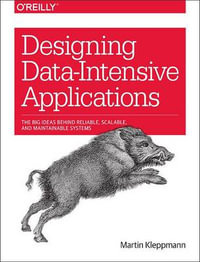| Preface | p. V |
| Introduction to Bioinformatics | p. 1 |
| Introduction | p. 1 |
| Needs of Bioinformatics Technologies | p. 2 |
| An Overview of Bioinformatics Technologies | p. 5 |
| A Brief Discussion on the Chapters | p. 8 |
| References | p. 12 |
| Overview of Structural Bioinformatics 15 | |
| Introduction | p. 15 |
| Organization of Structural Bioinformatics | p. 17 |
| Primary Resource: Protein Data Bank | p. 18 |
| Data Format | p. 18 |
| Growth of Data | p. 18 |
| Data Processing and Quality Control | p. 20 |
| The Future of the PDB | p. 21 |
| Visualization | p. 21 |
| Secondary Resources and Applications | p. 22 |
| Structural Classification | p. 22 |
| Structure Prediction | p. 28 |
| Functional Assignments in Structural Genomics | p. 30 |
| Protein-Protein Interactions | p. 32 |
| Protein-Ligand Interactions | p. 34 |
| Using Structural Bioinformatics Approaches in Drug Design | p. 37 |
| The Future | p. 39 |
| Integration over Multiple Resources | p. 39 |
| The Impact of Structural Genomics | p. 39 |
| The Role of Structural Bioinformatics in Systems Biology | p. 39 |
| References | p. 40 |
| Database Warehousing in Bioinformatics | p. 45 |
| Introduction | p. 45 |
| Bioinformatics Data | p. 48 |
| Transforming Data to Knowledge | p. 51 |
| Data Warehousing | p. 54 |
| Data Warehouse Architecture | p. 56 |
| Data Quality | p. 58 |
| Concluding Remarks | p. 60 |
| References | p. 61 |
| Data Mining for Bioinformatics | p. 63 |
| Introduction | p. 63 |
| Biomedical Data Analysis | p. 64 |
| Major Nucleotide Sequence Database, Protein Sequence Database, and Gene Expression Database | p. 65 |
| Software Tools for Bioinformatics Research | p. 68 |
| DNA Data Analysis | p. 71 |
| DNA Sequence | p. 71 |
| DNA Data Analysis | p. 76 |
| Protein Data Analysis | p. 92 |
| Protein and Amino Acid Sequence | p. 92 |
| Protein Data Analysis | p. 99 |
| References | p. 109 |
| Machine Learning in Bioinformatics | p. 117 |
| Introduction | p. 117 |
| Artificial Neural Network | p. 120 |
| Neural Network Architectures and Applications | p. 128 |
| Neural Network Architecture | p. 128 |
| Neural Network Learning Algorithms | p. 131 |
| Neural Network Applications in Bioinformatics | p. 134 |
| Genetic Algorithm | p. 135 |
| Fuzzy System | p. 141 |
| References | p. 147 |
| Systems Biotechnology: a New Paradigm in Biotechnology Development | p. 155 |
| Introduction | p. 155 |
| Why Systems Biotechnology? | p. 156 |
| Tools for Systems Biotechnology | p. 158 |
| Genome Analyses | p. 158 |
| Transcriptome Analyses | p. 159 |
| Proteome Analyses | p. 161 |
| Metabolome/Fluxome Analyses | p. 163 |
| Integrative Approaches | p. 164 |
| In Silico Modeling and Simulation of Cellular Processes | p. 166 |
| Statistical Modeling | p. 167 |
| Dynamic Modeling | p. 169 |
| Conclusion | p. 170 |
| References | p. 171 |
| Computational Modeling of Biological Processes with Petri Net-Based Architecture | p. 179 |
| Introduction | p. 179 |
| Hybrid Petri Net and Hybrid Dynamic Net | p. 183 |
| Hybrid Functional Petri Net | p. 190 |
| Hybrid Functional Petri Net with Extension | p. 191 |
| Definitions | p. 191 |
| Relationships with Other Petri Nets | p. 197 |
| Implementation of HFPNe in Genomic Object Net | p. 198 |
| Modeling of Biological Processes with HFPNe | p. 198 |
| From DNA to mRNA in Eucaryotes - Alternative Splicing | p. 199 |
| Translation of mRNA - Frameshift | p. 203 |
| Huntington's Disease | p. 203 |
| Protein Modification - p53 | p. 207 |
| Related Works with HFPNe | p. 211 |
| Genomic Object Net: GON | p. 212 |
| GON Features That Derived from HFPNe Features | p. 214 |
| GON GUI and Other Features | p. 214 |
| GONML and Related Works with GONML | p. 220 |
| Related Works with GON | p. 222 |
| Visualizer | p. 224 |
| Bio-processes on Visualizer | p. 226 |
| Related Works with Visualizer | p. 231 |
| BPE | p. 233 |
| Conclusion | p. 236 |
| References | p. 236 |
| Biological Sequence Assembly and Alignment | p. 243 |
| Introduction | p. 243 |
| Large-Scale Sequence Assembly | p. 245 |
| Related Research | p. 245 |
| Euler Sequence Assembly | p. 249 |
| PESA Sequence Assembly Algorithm | p. 249 |
| Large-Scale Pairwise Sequence Alignment | p. 254 |
| Pairwise Sequence Alignment | p. 254 |
| Large Smith-Waterman Pairwise Sequence Alignment | p. 256 |
| Large-Scale Multiple Sequence Alignment | p. 257 |
| Multiple Sequence Alignment | p. 257 |
| Large-Scale Clustal W Multiple Sequence Alignment | p. 258 |
| Load Balancing and Communication Overhead | p. 259 |
| Conclusion | p. 259 |
| References | p. 260 |
| Modeling for Bioinformatics 263 | |
| Introduction | p. 263 |
| Hidden Markov Modeling for Biological Data Analysis | p. 264 |
| Hidden Markov Modeling for Sequence Identification | p. 264 |
| Hidden Markov Modeling for Sequence Classification | p. 273 |
| Hidden Markov Modeling for Multiple Alignment Generation | p. 278 |
| Conclusion | p. 280 |
| Comparative Modeling | p. 281 |
| Protein Comparative Modeling | p. 281 |
| Comparative Genomic Modeling | p. 284 |
| Probabilistic Modeling | p. 287 |
| Bayesian Networks | p. 287 |
| Stochastic Context-Free Grammars | p. 288 |
| Probabilistic Boolean Networks | p. 288 |
| Molecular Modeling | p. 290 |
| Molecular and Related Visualization Applications | p. 290 |
| Molecular Mechanics | p. 294 |
| Modern Computer Programs for Molecular Modeling | p. 295 |
| References | p. 297 |
| Pattern Matching for Motifs | p. 299 |
| Introduction | p. 299 |
| Gene Regulation | p. 301 |
| Promoter Organization | p. 302 |
| Motif Recognition | p. 303 |
| Motif Detection Strategies | p. 305 |
| Multi-genes, Single Species Approach | p. 306 |
| Single Gene, Multi-species Approach | p. 307 |
| Multi-genes, Multi-species Approach | p. 309 |
| Summary | p. 309 |
| References | p. 310 |
| Visualization and Fractal Analysis of Biological Sequences | p. 313 |
| Introduction | p. 313 |
| Fractal Analysis | p. 317 |
| What Is a Fractal? | p. 317 |
| Recurrent Iterated Function System Model | p. 319 |
| Moment Method to Estimate the Parameters of the IFS (RIFS) Model | p. 320 |
| Multifractal Analysis | p. 321 |
| DNA Walk Models | p. 323 |
| One-Dimensional DNA Walk | p. 323 |
| Two-Dimensional DNA Walk | p. 324 |
| Higher-Dimensional DNA Walk | p. 325 |
| Chaos Game Representation of Biological Sequences | p. 325 |
| Chaos Game Representation of DNA Sequences | p. 325 |
| Chaos Game Representation of Protein Sequences | p. 326 |
| Chaos Game Representation of Protein Structures | p. 326 |
| Chaos Game Representation of Amino Acid Sequences Based on the Detailed HP Model | p. 327 |
| Two-Dimensional Portrait Representation of DNA Sequences | p. 330 |
| Graphical Representation of Counters | p. 330 |
| Fractal Dimension of the Fractal Set for a Given Tag | p. 332 |
| One-Dimensional Measure Representation of Biological Sequences | p. 335 |
| Measure Representation of Complete Genomes | p. 335 |
| Measure Representation of Linked Protein Sequences | p. 340 |
| Measure Representation of Protein Sequences Based on Detailed HP Model | p. 344 |
| References | p. 348 |
| Microarray Data Analysis | p. 353 |
| Introduction | p. 353 |
| Microarray Technology for Genome Expression Study | p. 354 |
| Image Analysis for Data Extraction | p. 356 |
| Image Preprocessing | p. 357 |
| Block Segmentation | p. 359 |
| Automatic Gridding | p. 360 |
| Spot Extraction | p. 360 |
| Background Correction, Data Normalization and Filtering, and Missing Value Estimation | p. 361 |
| Data Analysis for Pattern Discovery | p. 363 |
| Cluster Analysis | p. 363 |
| Temporal Expression Profile Analysis and Gene Regulation | p. 371 |
| Gene Regulatory Network Analysis | p. 382 |
| References | p. 384 |
| Index | p. 389 |
| Table of Contents provided by Publisher. All Rights Reserved. |


























